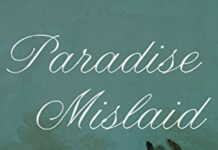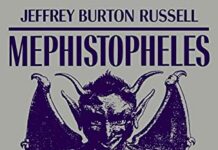
Ebook Info
- Published: 1991
- Number of pages: 160 pages
- Format: PDF
- File Size: 5.86 MB
- Authors: Jeffrey Burton Russell
Description
Neither Christopher Columbus nor his contemporaries thought the earth was flat. Yet this curious illusion persists today, firmly established with the help of the media, textbooks, teachers―even noted historians. Inventing the Flat Earth is Russell’s attempt to set the record straight. He begins with a discussion of geographical knowledge in the Middle Ages, examining what Columbus and his contemporaries actually did believe, and then moves to a look at how the error was first propagated in the 1820s and 1830s and then snowballed to outrageous proportions by the late 19th century. But perhaps the most intriguing focus of the book is the reason why we allow this error to persist. Do we prefer to languish in a comfortable and familiar error rather than exert the effort necessary to discover the truth? This uncomfortable question is engagingly answered.Inventing the Flat Earth is Jeffrey Burton Russell’s attempt to set the record straight. He begins with a discussion of geographical knowledge in the Middle Ages, examining what Columbus and his contemporaries actually did believe, and then moves to a look at how the error was first propagated in the 1820s and 1830s―including how noted writers Washington Irving and Antoinne-Jean Letronne were among those responsible. He shows how later day historians followed these original mistakes, and how this snowball effect grew to outrageous proportions in the late nineteenth century, when Christians opposed to Darwinism were labelled as similar to Medieval Christians who (allegedly) thought the earth was flat. But perhaps the most intriguing focus of the book is the reason why we allow this error to persist. Do we prefer to languish in a comfortable and familiar error rather than exert the effort necessary to discover the truth? This uncomfortable question is engagingly answered, and includes a discussion about the implications of this for historical knowledge and scholarly honesty.
User’s Reviews
Editorial Reviews: Review “Inventing the Flat Earth…is a jewel of a book that provides important new insights into the way historians have interpreted Columbus’s achievement.”-The New York Times Book Review?[Russell] has written a scholarly, yet very readable, investigation into [the “flat earth” myth’s] background, origins, and consequences. This book also is well-documented and contains a good bibliography and numerous helpful illustrations. It can be of interest to scholars and other serious readers as well as to students in the classroom dealing with problems of medieval-modern intellectual history.?-Teaching History?Inventing the Flat Earth is a well-written and thoroughly researched account of a fascinating topic. It is strongly recommended.?-Science & Christian Belief?Russell conclusively shows how the ‘flat earth’ myth was concocted and popularized by Washington Irving and a French erudit and how the ‘flat error’ was declared by Darwininst historians, who compared the denial of Darwin’s theory to Columbus’s struggle for acceptance by his scholastic religious contemporaries. The book is a delightful, provocative, and persuasive interpretation about a myth that has flitted in and out of popular history.?- Colonial Latin American Historical Review?Russell packs a punch in this slender, clearly written, and engagingly argued volume.?-Booklist?This book is must reading for all Christians.?-Biblical Worldview?This book is must reading for all Christians.??Biblical Worldview”ÝRussell¨ has written a scholarly, yet very readable, investigation into Ýthe “flat earth” myth’s¨ background, origins, and consequences. This book also is well-documented and contains a good bibliography and numerous helpful illustrations. It can be of interest to scholars and other serious readers as well as to students in the classroom dealing with problems of medieval-modern intellectual history.”-Teaching History”[Russell] has written a scholarly, yet very readable, investigation into [the “flat earth” myth’s] background, origins, and consequences. This book also is well-documented and contains a good bibliography and numerous helpful illustrations. It can be of interest to scholars and other serious readers as well as to students in the classroom dealing with problems of medieval-modern intellectual history.”-Teaching History”Inventing the Flat Earth is a well-written and thoroughly researched account of a fascinating topic. It is strongly recommended.”-Science & Christian Belief”Russell packs a punch in this slender, clearly written, and engagingly argued volume.”-Booklist”This book is must reading for all Christians.”-Biblical Worldview”Russell conclusively shows how the ‘flat earth’ myth was concocted and popularized by Washington Irving and a French erudit and how the ‘flat error’ was declared by Darwininst historians, who compared the denial of Darwin’s theory to Columbus’s struggle for acceptance by his scholastic religious contemporaries. The book is a delightful, provocative, and persuasive interpretation about a myth that has flitted in and out of popular history.”- Colonial Latin American Historical Review About the Author JEFFREY BURTON RUSSELL is Professor of History at the University of California, Santa Barbara. He has contributed numerous articles to scholarly journals and reference volumes and is the author of 16 other books on medieval history, the history of religion, and intellectual history, including A History of Heaven: The Singing Silence (1997).
Reviews from Amazon users which were colected at the time this book was published on the website:
⭐Christopher Columbus was a radical who thought that the earth was round while everyone around him believed the earth was flat. That’s the history that most of us are taught, but it’s wrong. The fallacy of this view and the intellectual fraud that perpetrated it are explained in Jeffrey Burton Russell’s short book.There were a few medieval “flat earthers,” to be sure. Russell explains, though, that no one of any stature was influenced whatsoever by them, and especially not by Cosmas Indicopleustes, who has been given undue attention by writers eager to hold him up as typical of the period.The ancient Greeks believed that the earth was a globe. Modern historians invented, and in some cases continue to teach, that this knowledge was suppressed by the Catholic church in the middle ages. According to Russell, the church did not stand athwart history yelling “Stop!” Augustine, Origen, and Bede, as well as other Christian intellectuals, acknowledged the sphericity of the earth.People living in the middle ages, if they thought about such matters at all, could see that the earth was likely a sphere. After all, the hull of a ship disappeared over the horizon before the mast did. The stars also provided evidence that the world was not flat. Russell convincingly shows that the concept of a “dark age,” during which the ancient Greek and Roman knowledge was lost, is pure fantasy and was promulgated by modern historians in part to make their own work at “reinterpreting” the classics seem more profound. The “Flat Error,” as Russell calls it, was amplified over time as some intellectuals repeated the claim of earlier secondary sources without checking the primary sources for the evidence.
⭐Great book. All lies all the time!
⭐Dr Russell documents that almost every educated person in the Middle Ages, inside and outside the Church, believed that the earth is a globe. Centuries before Columbus, “the Venerable Bede” affirmed that the earth was round “like a ball” not a shield; and he is one of many. There were a few obscure flat-earthers like Lactantius and Cosmas Indicopleustes but they were largely ignored. Royalty held a golden sphere (‘orb’) with a cross (globus cruciger), where the sphere was clearly understood by the rulers and subjects to represent the earth.Furthermore, the medieval people even knew how big the globe was—Columbus got that wrong—and how small it was compared with the universe. And in the late Middle Ages, scientist/clergy Buridan and Oresme even toyed with ideas that the earth rotates.The idea that Columbus was the only round-earther against a multitude of flat-earthers is a lie fabricated by Washington Irving. Then 19th-century atheopathic propagandists like John Willam Draper and Andrew Dickson White spread this mendacity as part of their ‘conflict thesis’.It’s notable that the famous Stephen Jay Gould had nothing but praise for this book. It is also good to read its footnotes because there is plenty of supporting information and quotation.
⭐Russell, a widely-published historian of intellectual medieval thought, demonstrates that since classical antiquity (at least), there has never been a time when Western culture in general believed in a “flat earth”, and that the common image of Columbus as a champion of scientific “truth” against the superstitions of the philosophers and theologians is false. The text consists of an extended essay in five parts: (1) The Well-Rounded Planet (more or less an introduction); (2) The Medieval Ball (showing the medieval belief in the Earth as a globe); (3) Flattening the Globe (the rise of the “flat earth” theory, especially in the nineteenth century); (4) The Wrong Way Round (focussed on Washington Irving’s “history” of Columbus and its influence); and (5) Around the Corner (a chronological survey of views of the Earth, beginning with the classical Greeks, followed by a discussion of the persistence of the flat earth view, even after it is proven false). This is followed by twenty-four pages of footnotes (many of which are discursive, not merely referential), an extensive bibliography of works both ancient and modern, and a helpful index.Russell includes evidence both for and against his case, and raises crucial questions about the nature of the progress of knowledge and the interpretation of data. Well-written, easily read in an evening, and compelling. Highly recommended.
⭐This little book is apparently intended more for specialists than for a general audience, thus the debates that a work on a comparatively arcane topic has inspired among these reviewers. For what it’s worth, I always thought that epicycles and deferents were spheres resulting in movement in circles; the mappemundi issue is addressed in the book. In any event, the book is fascinating for those with some grounding in early medieval science but may be tough going otherwise. One suspects that the author’s expertise inclines toward that period since events in the 18th and 19th centuries, though more important to his thesis, are more lightly handled. The criticisms that it is repetitive are correct.
⭐This is an amazing book, it describes in detail how early American historians created the myth of Columbus and the flat earth to discredit religious education. How they did it, how easily the lie took hold and how pervasive it is today. Most people today learned that Columbus had a hard time convincing the kind and queen of Spain to let him sail west to the Indies because the religious advisers to the throne claimed the world was flat and the ships would fall off the edge of the earth. This is a total fabrication that became ‘common knowledge’. Read the book and beaware that the same things, just different lies, are being built into the education of Americans today.
⭐I could hardly do better than to quote from the foreword:`At the beginning of his book he quotes from current text-books used in American grade schools, high schools and colleges which insist that there was a consensus among medieval scholars from A.D. 300 to 1492 that the earth was flat. This also was the thesis of the influential historian Daniel Boorstin writing for a popular audience in his book, The Discoverers, published in 1983. Russell then uses his deep knowledge of medieval intellectual history to demonstrate that the opposite was true. It was conventional wisdom among both early-and late-medieval thinkers that the world was round’Russel subjects the misconception and prejudice to the clear light of fact.Firstly, he demonstrates that the academic (and religious) direction was always that the earth is a globe. There were a couple of flat-earthers and a few supporters on the way but a) they were ignored/ condemned as heretics at the time and b) guilibility was not invented in the 20th/21st century.Then he explains how the misconception came to be – the main thrust being in the industrialised 19th century. Being an American author, most references are to other Americans.Further – he offers suggestions as to why the Flat Error persists, despite more than adequate factual evidence to the contrary.It’s all contained in 77 pages – about the quantity that an interested non-specialist can cope with. The binding of the digital reprint technology edition, though, is awful – the pages fall out as soon as you bend the spine.For further facts about medieval science try `God’s philosophers – how the medieval world laid the foundations of modern schience’ by James Hannam.
⭐Deeply academic, yet very readable book. Even the foreword starts right with the notion, that there are still some people, who believe to myth about the flat Earth. I was also thinking, that in the medieval era people thought it. Yet, Mr. Russell walks the reader page by page out of this false idea. I really recommend this book to all authors of school textbooks.
⭐Ein Muss für jeden, der wissen will, wie eine rationale Gesellschaft sich selber betrügt.
⭐
Keywords
Free Download Inventing the Flat Earth: Columbus and Modern Historians in PDF format
Inventing the Flat Earth: Columbus and Modern Historians PDF Free Download
Download Inventing the Flat Earth: Columbus and Modern Historians 1991 PDF Free
Inventing the Flat Earth: Columbus and Modern Historians 1991 PDF Free Download
Download Inventing the Flat Earth: Columbus and Modern Historians PDF
Free Download Ebook Inventing the Flat Earth: Columbus and Modern Historians


